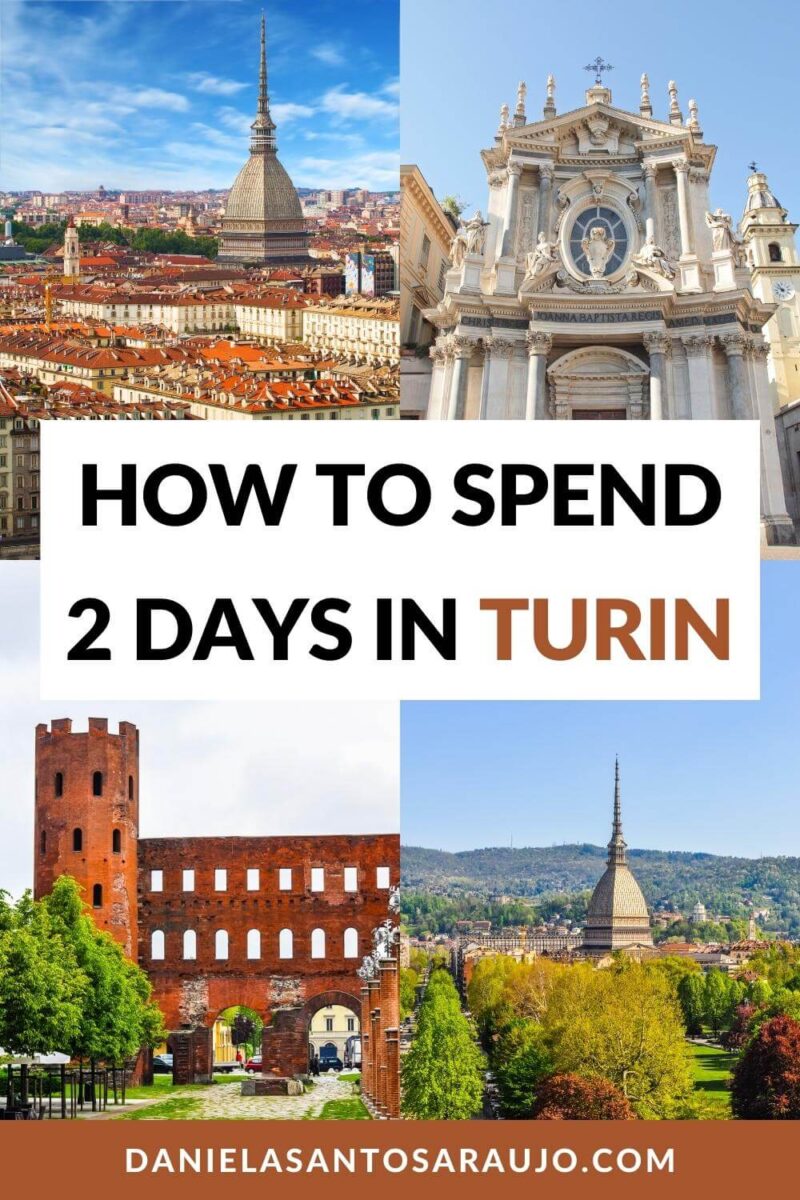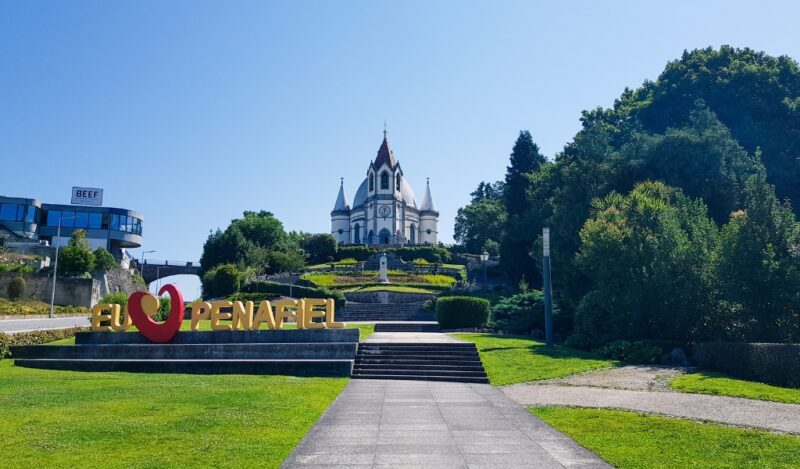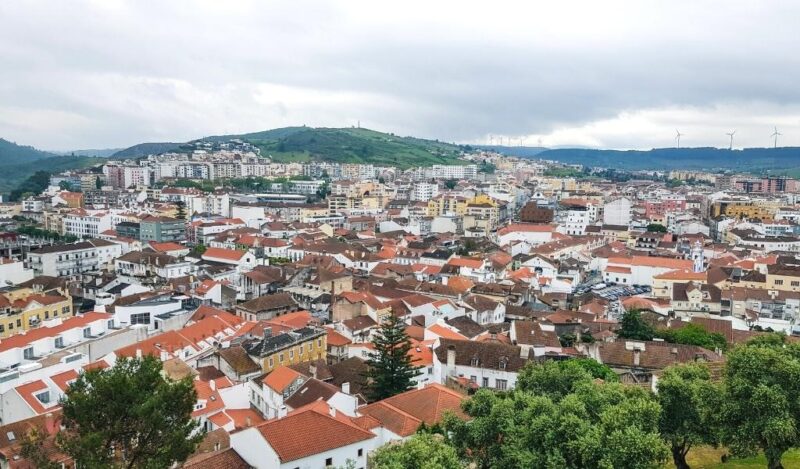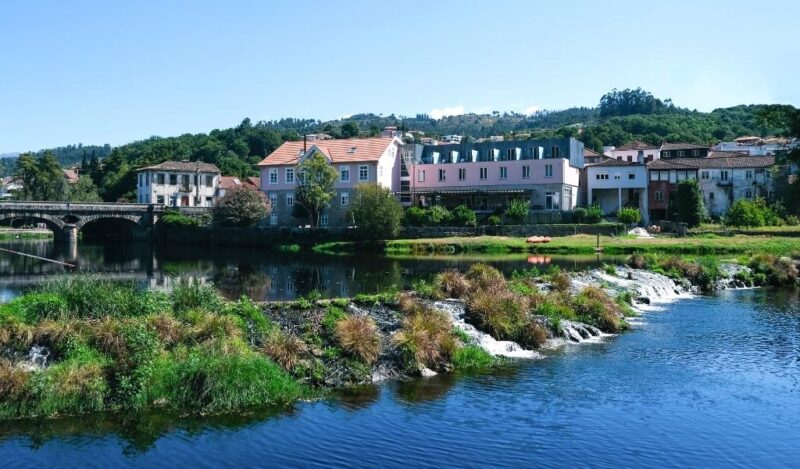In northwest Italy, you’ll find Turin, the capital and largest city in the Piedmont region. Torino (in Italian) is a two-thousand-year-old city, which in the Roman period was called Augusta Taurinorum. Currently, it’s the fourth-largest city in the country, right after Rome, Milan, and Naples.
Despite being best known for the automotive industry (FIAT) and football (Juventus FC), Turin is a city of history, art, and culture. For example, did you know that there are more than three dozen museums in Turin? Additionally, there are over fifty churches and fifteen theaters and concert halls, among other tourist attractions.
So, do you want to know more about 2 Days In Turin: The Perfect Turin Itinerary? Keep reading!
This post may contain affiliate links, meaning I earn a small commission if you make a purchase, at no additional cost to you. Please read my disclosure & privacy policy for more information.
No time to read now? Pin it for later!


Brief History of Turin
As I mentioned in the introduction, Turin is a city with at least two millennia of history. As far as is known, the first people who inhabited here were the Taurini, of Celtic and Ligurian origins. However, the first most relevant remains date from the Roman occupation, when Emperor Augustus gave his name to the city.
Therefore, some works of the Roman Empire have survived to the present day. This is the case of the Porta “Decumana”(incorporated in the Palazzo Madama), the Porta Palatina (very close to the Duomo), or even the ruins of the theater.
With the fall of the Western Roman Empire, the city was conquered by several Germanic peoples in the following centuries. However, the 11th century marked the moment when Turin came to be governed by the Counts of Savoy, later Dukes of Savoy.

The House of Savoy was responsible for Turin‘s urban development, eventually becoming one of the most influential noble families in Europe. The various palaces and gardens started to emerge in the 15th century, as did the Università di Torino.
At the same time, Turin had been the capital of the Duchy of Savoy since 1563. Three centuries later, the duchy became the Kingdom of Piedmont and Sardinia, still ruled by the Savoy. And although the region was conquered by the French Empire in 1802, the kingdom was restored shortly after the fall of Napoleon.
Meanwhile, the Risorgimento movement was fighting for the unification of Italy. This happened in 1861 and then King Vittorio Emanuele II declared Turin as the first Italian capital. Even if this feat only lasted for four years, it led to the construction of the iconic Museo Egizio and Mole Antonelliana.
Visiting Turin
First of all, Turin is served by an international airport (Aeroporto di Torino), which is about 16km from the city. This is the most practical means of transportation to reach this Italian region – especially from abroad – but it’s not the only one. For example, I visited Turin from Milan and chose to travel by train (the journey takes one hour).
This destination is also very close to countries like France or Switzerland, so you’ll find several options for international trains and buses. If you plan to travel by train, then you should check out the Stazione Torino Porta Nuova website or the Trenitalia website. At the same station (Porta Nuova), you’ll find the bus station served by countless brands, notably Flixbus and Eurolines.
Once in the city center, it’s easy to get around on foot, because the monuments are very close. In any case, there are several types of buses, trams, and even a metro line.
Where to Stay in Turin

BUDGET – Combo Torino
The Combo Torino is located in Aurora Vanchiglia, 0.7 km from the center of Turin. The free wifi access, bar, and continental or Italian breakfast are some of the most popular facilities.
The Hostel die Wohngemeinschaft has dormitories (with 4, 6, or 16 beds), rooms (twin, double, and family), and suites (junior, family, and executive).
BUDGET – Hotel Torino Porta Susa
The Hotel Torino Porta Susa is situated in the Historic Center of Turin, 1.4 km from the center of Turin. The free wifi access, bar, and room service are some of the most popular facilities.
The Hotel Torino Porta Susa has single, twin, double, and triple rooms.


MID-RANGE – Hotel Roma e Rocca Cavour
The Hotel Roma e Rocca Cavour is located in the Historic Center of Turin, 0.9 km from the center of Turin. The room service, bar, and continental or buffet breakfast are some of the most popular facilities.
The Hotel Roma e Rocca Cavour has rooms (single, twin, double, and triple) and suites.
MID-RANGE – Hotel Concord
The Hotel Concord is situated in the Historic Center of Turin, 0.9 km from the center of Turin. The room service, bar, and private parking are some of the most popular facilities.
The Hotel Concord has rooms (single, twin, double, and triple) and suites (with spa access).


LUXURY – Grand Hotel Sitea
The Grand Hotel Sitea is located in the Historic Center of Turin, 0.6 km from the center of Turin. The room service, restaurant, and spa are some of the most popular facilities.
The Grand Hotel Sitea has rooms (single, double, and triple) and suites (junior).
LUXURY – Principi di Piemonte | UNA Esperienze
The Principi di Piemonte | UNA Esperienze is situated in the Historic Center of Turin, 0.7 km from the center of Turin. The room service, swimming pool, and spa are some of the most popular facilities.
The Principi di Piemonte | UNA Esperienze has double rooms and suites (junior, executive, diplomatic, and presidential).

Turin Itinerary – Day 1
Piazza San Carlo
The first day of this Turin itinerary starts in one of the most popular squares in the city. Interestingly, it’s known as “Il Salotto di Torino”, that is, “The Living Room of Turin”. Exquisite in style, it’s mainly famous for its shops, cafes, and restaurants under the side porticoes. So take the opportunity to have breakfast at Caffe’ Torino, Caffè San Carlo, or at the pastry and confectionery shop Stratta.
The Piazza San Carlo was built in the first half of the 16th century and is named after Saint Charles Borromeo, Cardinal and Archbishop of Milan. However, it was inaugurated as Piazza Reale and in the 1650s it was even called Piazza d’Armi, for its military use.
Located in the historic center of Turin, the Piazza San Carlo is halfway to both Stazione di Porta Nuova and Piazza Castello. With two “twin” churches at the south end (San Carlo and Santa Cristina), this square reminded me of the Piazza del Popolo in Rome!
Finally, make sure you photograph the Caval ‘d brons, an equestrian bronze statue of Emmanuel Philibert, Duke of Savoy. This monument was designed in 1838 by the sculptor Carlo Marochetti and is the central attraction of Piazza San Carlo.
Museo Egizio
200 meters from the Piazza San Carlo, you’ll find the Museo Egizio, a museum of Egyptian archeology and anthropology. Did you know that this is the only museum in the world entirely dedicated to Ancient Egypt outside this country? For this reason, I have published a complete visitor’s guide, where you can find information regarding opening hours, prices and accesses, and the best tips and suggestions.
The Egyptian Museum of Turin is undoubtedly the most important in the city and one of the most visited in Italy! In fact, its collection is one of the largest in the world, with more than 30,000 artifacts, of which only 6,500 are on permanent display. Here are brought together all kinds of pieces, for example, statues, papyrus, sarcophagi, and even real mummies!
Read my complete guide to the Egyptian Museum, a must-see tourist attraction on any Turin itinerary!
Palazzo Carignano & Palazzo Madama e Casaforte degli Acaja
Right after the Museo Egizio, you will find a series of palaces, the first being Palazzo Carignano. Currently, this historic building houses the Museo Nazionale del Risorgimento Italiano, in addition to being between the Biblioteca Nazionale Universitaria and the Teatro Carignano.
The Palazzo Carignano is very important for the city of Turin because it’s part of the circuit of the Residences of the Royal House of Savoy. After all, this set of monuments was inscribed on the UNESCO World Heritage List in Italy in 1997.


Most of these residences are in the province of Turin (the main in the Piedmont region), but there are some in the homonymous city. This is the case with the Baroque monument Palazzo Madama, which includes the medieval castle Casaforte degli Acaja.
Just a few minutes from the Palazzo Carignano, this architectural complex is located in Piazza Castello – the most visited in the city. Its name honors two Royal Madames: Christine of France and Marie Jeanne Baptiste of Savoy-Nemours. In 1934, the “double palace” became the headquarters of the Museo Civico d’Arte Antica.
Polo Reale
Although this is the ideal time for lunch, you can choose to visit the Real Chiesa di San Lorenzo before the Polo Reale. As the name implies, this royal church in Baroque style was built between 1668 and 1687 and is right next to the Palazzo Reale.
Now, the Polo Reale, also known as Musei Reali di Torino, is one of the largest museum complexes in Europe. Located in the heart of the old city, the Royal Museums of Turin offer around 30.000 m2 of exhibition and storage space!
Therefore, the Royal Pole of Turin includes the following buildings:
- Armeria Reale (Royal Armoury)
- Biblioteca Reale (Royal Library)
- Sale Chiablese (palace with temporary exhibitions)
- Palazzo Reale (Royal Palace)
- Cappella della Sindone (Chapel of the Holy Shroud)
- Galleria Sabauda (Pinacoteca, that is, Gallery of Paintings)
- Museo di Antichità (Museum of Archaeological Antiquities)
- Giardini Reali (Royal Gardens)

The origin of this royal residence dates back to 1563, when Emmanuel Philibert, Duke of Savoy decided to declare Turin the capital of the duchy. In the following centuries, a major urban transformation took place, with the Royal Palace as the central building. And surprisingly, the House of Savoy lived in this same palazzo until 1946!
Logically, the Palazzo Reale belongs to the group of Residences of the Royal House of Savoy which is a UNESCO World Heritage Site. And the Royal Museums as they are known today were finally grouped in 2014. You can visit them from Tuesday to Sunday, even though the times for each monument differ. For more information, you can consult the Musei Reali website or even the official online ticket office.
Duomo di San Giovanni Battista
The Cathedral of Turin is known mainly by the name Duomo di San Giovanni Battista. Constructed in the last decade of the 15th century, it was clearly dedicated to Saint John the Baptist. Previously, this was the location of the theater of the ancient Roman city, although, at the time of construction, there was already a bell tower (erected in 1469).
As far as is known, in the Middle Ages three churches existed here – San Salvatore, San Giovanni, and Santa Maria de Dompno – before they were demolished. These days, the Cathedral of Turin is undeniably famous for housing the Holy Shroud of Jesus Christ. Therefore, even if the Cappella della Sindone is part of the Polo Reale, it belongs to the Duomo.
This chapel was added to the Cathedral of Turin between 1668 and 1694, from a project by Guarino Guarini. This Italian architect is the one responsible for the designs of the Palazzo Carignano and the Real Chiesa di San Lorenzo, just to exemplify. And still on the Holy Shroud: the Catholic Church believes that it’s the very shroud that covered the body of Jesus Christ. So there’s even a museum about this relic of Christianity!
Porta Palatina & Porta Palazzo
The Porta Palatina is one of the best-preserved gates of the early Roman Empire in the world. It was built either in the Augusta Era or the Flavian Era and was one of the main entrances to the city. In 2006, the city of Turin decided to restore the monument, opening an archaeological park. Indeed, the Museo Archeologico – which is part of the Polo Reale – was created a few meters away from the Palatine Gate.
To end this first day visiting Turin, there’s nothing like shopping or dining at the neighboring Mercato di Porta Palazzo. Located in the important Piazza della Repubblica, the Porta Palazzo of Turin is the largest open-air market in Europe! This space is divided into three fairs: fish; meat, cheese, and bread; and vegetables, fruits, and flowers. It is, therefore, the perfect place to buy or taste some typical products of the region!
Turin Itinerary – Day 2
Mole Antonelliana (Museo Nazionale del Cinema)
The Mole Antonelliana is undoubtedly an architectural landmark in the city of Turin. Designed by Alessandro Antonelli, the building was first conceived as a synagogue. And near its completion in 1889, it was the tallest brick building in Europe!
Did you know that Mole Antonelliana appears on the reverse of the Italian 2-cent coin? For all these reasons, I decided to place it at the beginning of the second day of the itinerary. Especially because there’s been a museum inside since 2000! The Museo Nazionale del Cinema is entirely dedicated to the Seventh Art.

Its collection belonged to the historian Maria Adriana Prolo and is arranged over five floors, making it the tallest museum in the world! In addition to a large collection of paintings, photographs, books, posters, and rolls of film, there’s also a panoramic elevator.
This elevator opened in 1961 to celebrate the centenary of Italian Unification and was later renovated in 1999. And even though it’s not recommended for people with acrophobia – like me – it’s worth it! In short, you can see the interior of the museum through the glass walls, while going up to the panoramic terrace (85 meters high).
Piazza Vittorio Veneto
650 meters from the Mole Antonelliana, you’ll find the Piazza Vittorio Veneto. Its name is due to the Battle of Vittorio Veneto, which took place between October 24th and November 3rd, 1918. This conflict not only led to the fall of the Austro-Hungarian Empire but also contributed to the end of the First World War.

Turin’s largest square is now a favorite place for young people, with many bars and cafes. Besides, there are numerous restaurants with traditional food, with inviting terraces for lunch in the sun. And the views over the Ponte Vittorio Emanuele I and the Po River are perfect for taking pictures, especially at dusk.
Chiesa della Gran Madre di Dio
The Church of the Great Mother of God is on the other side of the Ponte Vittorio Emanuele I. Facing Piazza Vittorio Veneto, it’s a neoclassical church, much in vogue since the second half of the 18th century.

The Chiesa della Gran Madre di Dio was designed in 1814, in order to celebrate the return of King Vittorio Emanuele I after the defeat of Napoleon. Strongly inspired by the Pantheon in Rome, its construction began four years later.
Nevertheless, the works were interrupted and only resumed in 1827, already under the reign of Charles Felix of Sardinia. The temple was inaugurated by his successor (Charles Albert of Sardinia) in 1831.
Monte dei Cappuccini
The Monte dei Cappuccini is certainly the favorite place for tourists (and locals) to photograph Turin. This hill in front of the Po river is 700 meters away from the Chiesa della Gran Madre di Dio – despite being a considerable climb…
At the top, stands the Chiesa di Santa Maria del Monte dei Cappuccini, built for the Order of Friars Minor Capuchin. The works took several decades since they started in 1583 and were only concluded in 1656.

Next to the church and monastery, there’s also the Museo Nazionale della Montagna “Duca degli Abruzzi”. Its permanent exhibition focuses on the history of the Alpine region, as well as mountaineering and mountain tourism.
Parco del Valentino
The Parco del Valentino is the oldest public park not only in Turin but also in Italy. Opened in 1856 on the banks of the River Po, it has more than 50 hectares of green space. Known by locals as “Il Valentino”, the park includes several buildings, of which the following stand out:
- Orto Botanico e Museo (Botanical Garden and Museum, part of the University of Turin)
- Castello del Valentino (another of the Residences of the Royal House of Savoy)
- Borgo e Rocca Medievali (Medieval Village and Fortress)
Map of the Turin Itinerary
Share this blog post on your social media!
More Posts about Italy
4 Days In Rome: The Perfect Rome Itinerary
Roman Forum And Palatine Hill: Best Tips For Visiting In 2024
Colosseum: Best Tips For Visiting In 2024
More Posts about Travel Itineraries
1 Day In Penafiel: The Perfect Penafiel Itinerary
1 Day In Torres Vedras: The Perfect Torres Vedras Itinerary
2 Days In Arcos De Valdevez: The Perfect Arcos De Valdevez Itinerary
What Photography Gear Do I Use?
- Camera Body: Fujifilm X-T4 Mirrorless
- Camera Lens: Fujinon XF 18-55 mm F2.8-4 R LM OIS
- Tripod: Manfrotto Compact Action
- Small Tripod: Manfrotto PIXI Mini
- Smartphone Adaptor: Manfrotto PIXI Clamp
- Memory Card: SanDisk 128GB Extreme PRO SDXC






